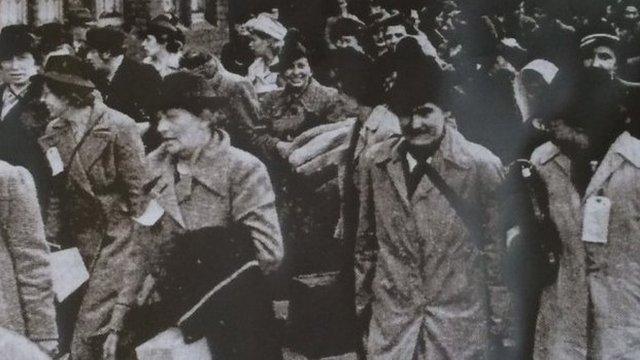Europe's only all-female WW2 internment camp remembered
- Published
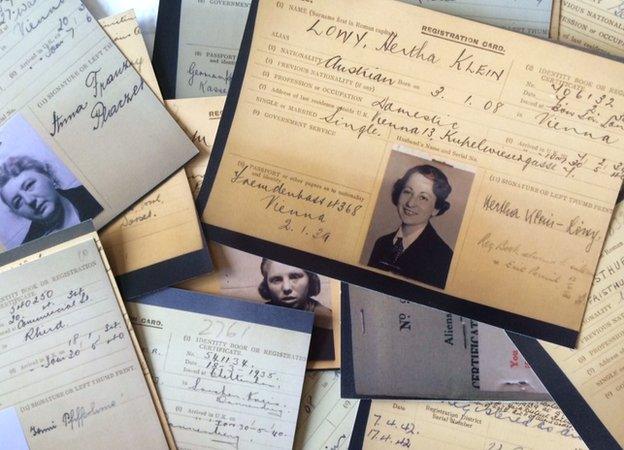
Thousands were detained in Europe's only all-female internment camp
An exhibition which reveals the previously untold stories of detainees at Europe's only all-female internment camp has opened in the Isle of Man.
It marks the 75th anniversary of the detention of more than 3,500 women and children in the south of the island during World War Two.
Organiser Pamela Crowe, of Rushen Heritage, said the exhibition was of "international importance".
It was opened at St Catherine's Church by former internee Kathleen Hallgarten.
A baby when she was interned with her mother Ruth Borchard, she spent 18 months in the Rushen camp.
The now 76-year-old, whose parents were from Hamburg, said: "I remember an awful lot from the stories my mother told me - she recalled it as an enormously happy time."
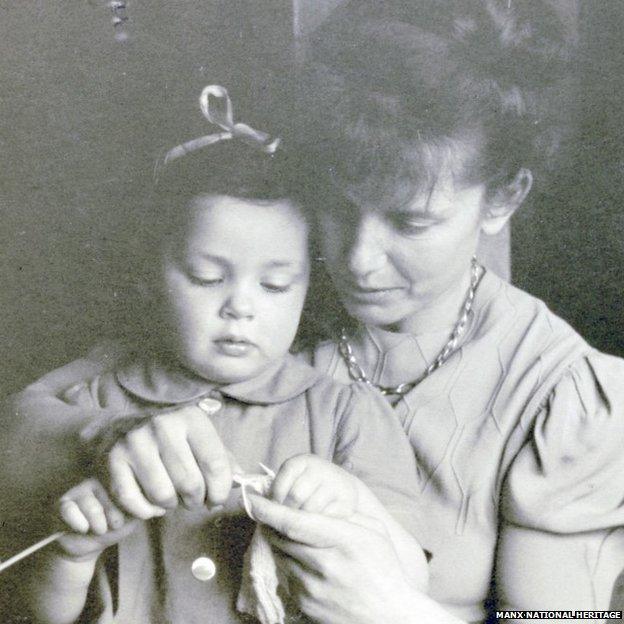
Ms Hallgarten arrived at the camp as a baby with her German mother Ruth Borchard
Ms Hallgarten's father was interned separately in the north of the island.
All three were sent to the Isle of Man at short notice because her father worked in the shipping industry in the UK.
She said it is an exhibition of "great historic importance" and an opportunity for those detained to thank the Manx landladies and residents.
"My mother said the worst thing was not knowing when we would be released and the best thing was the friendships forged with both fellow internees and locals.
"In London it was the Blitz and they were sharing half a bedroom with family - here it was tranquil and the hottest summer on record. We just played on the beach".
The Isle of Man was asked by the UK government to accommodate thousands of enemy aliens at camps in Douglas, Ramsey and Peel.
According to Mrs Crowe, the majority of those interned in Port Erin and Port St Mary were refugees who had fled from Nazi Germany.
Even German nationals who had lived in Britain for decades were arrested, as were those who held passports from the Axis powers.
An exhibition which tells the previously untold stories of internees at Europe's only all-female internment camp has opened in the Isle of Man
Thousands of women were sent to live in the south of the island.
Hilda Wolfgang, who was a housewife and completely loyal to Britain, recalls: "I was interned. Just like that two policemen came and fetched me. People stood lining the streets, throwing stones at you, spitting at you and shouting spies!
"That was horrible. Everyone thought it would be a concentration camp like it is in Germany. Several of them wanted to jump in the water, because they didn't know what was in front of them. When we arrived in the Isle of Man, we had pictures taken with our number on. We already had the feeling that we were criminals."
Mrs Crowe said the Rushen camp was "unique in Europe" as it was a "camp of women, run by women for women."
She said: "It was a wonderful time in so much as they had escaped the bombings in London and arrived in the beautiful towns of Port Erin and Port St Mary with their glorious beaches.
"The women were well-occupied and shared their skills which included sculpture, typing and dress-making. Some beautiful work was produced."
Rushen Heritage Director Hugh Davidson agreed that as the camp was run by the Home Office rather than the military, there was great freedom.
He said: "The local people were within the barbed wire perimeter as well as the internees.
"It was basically a unique form of government by women of women because it was run by the landladies".
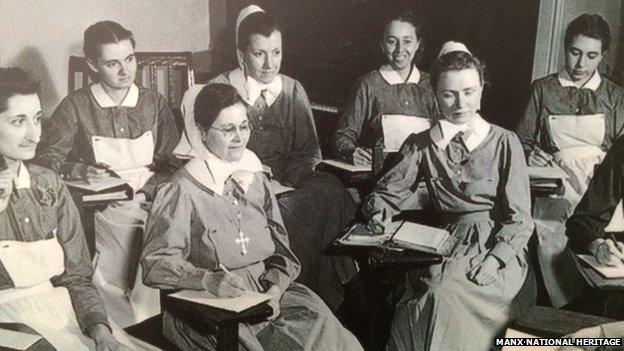
Internees shared skills during their time in the Isle of Man including painting, sculpture and typing.
Mrs Clarke continued: "We are not suggesting that Rushen Camp was Utopia, since many women internees had wrongly lost their freedom and were loyal to Britain."
All other Manx camps like Knockaloe, which housed 23,000 internees near Peel, were just for men.
During the internment the population of the villages of Port Erin and Port St Mary doubled with the camp remaining occupied for five years.
It eventually closed in 1945 with many choosing to stay on after the war and remaining firm friends for life with the families who had looked after them.
Mrs Crowe added: "From grand hotels to humble homes - all spare bedrooms were requisitioned to house the thousands of women that arrived."
The research for the exhibition was undertaken by volunteers from the Rushen Heritage Trust.
The display is open daily from 10:00-16:00 BST until 14 June.
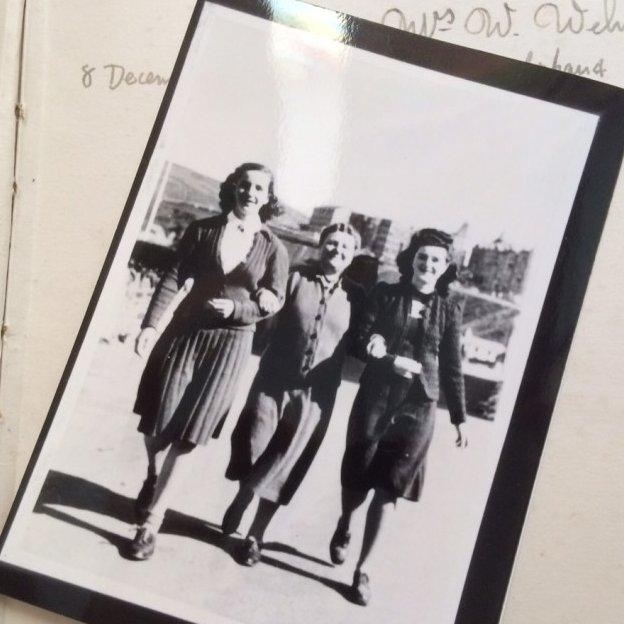
The exhibition traces how internees ended up at the camp and what daily life was like there
Rushen Women's Camp
It was initially for women and children only
Boarding house keepers remained in their houses and ran them for internees
There were no soldiers at Rushen Camp
It was operated by a small group of civil servants and Manx landladies: a camp run by women for women
Unlike other Manx camps, boarding houses were not surrounded by high barbed-wire fences
Internees could shop, walk, and bathe during daylight hours
- Published29 May 2015
